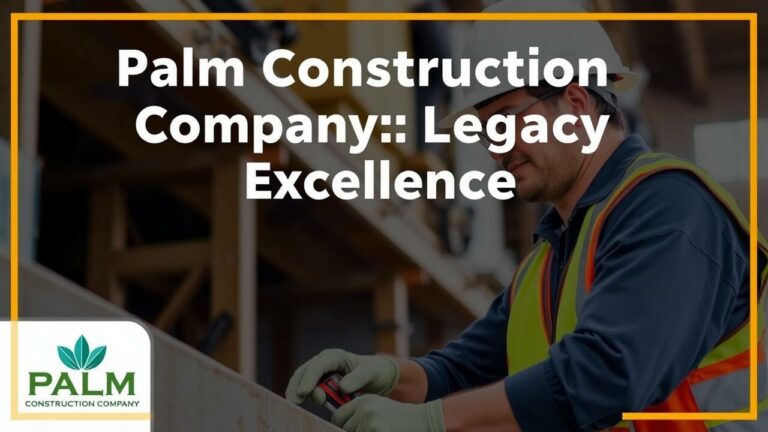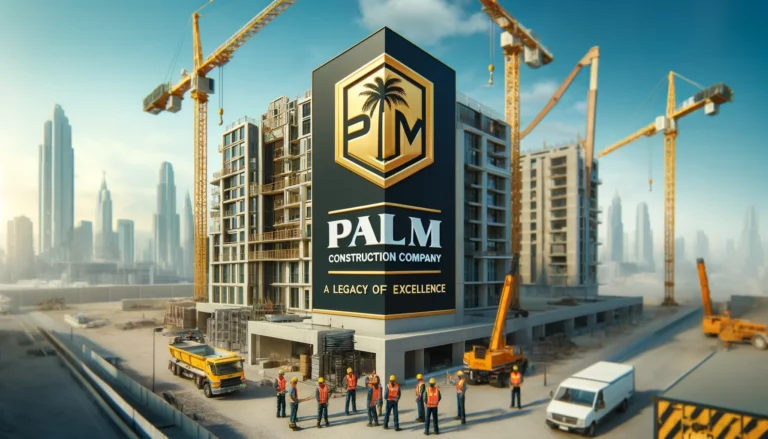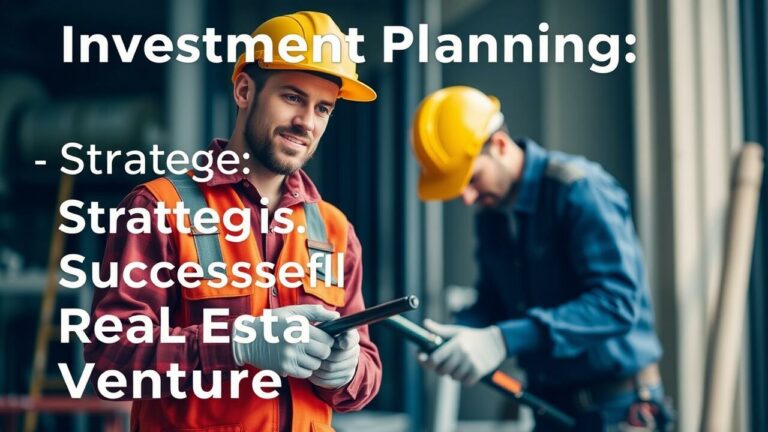Navigating the labyrinth of financing for residential construction is no small feat—it demands a keen grasp of the myriad options at your disposal. Picture this: an array of loans, each tailored to cater to distinct needs—home construction loans, traditional mortgages, personal loans—like pieces in a complex puzzle. Each option arrives with its own set of eligibility criteria, interest rates that can fluctuate like a pendulum, and repayment terms that might feel as convoluted as they are crucial. Home construction loans? They’re designed specifically to fund your grand vision from the ground up! Traditional mortgages? Well, they tend to fit snugly when you’re eyeing that ready-to-move-in gem.
But hold on; before diving headfirst into financing waters, it’s imperative to take stock of your financial landscape and carve out a budget that aligns seamlessly with your ambitious project goals.
Now let’s turn our gaze beyond conventional avenues. What about those alternative funding sources lurking in the shadows? Personal savings could be your safety net; crowdfunding platforms may open doors you hadn’t considered; or perhaps cozying up with investors could add some muscle to your funding strategy. Grasping the intricate nuances behind each funding source empowers aspiring homeowners and builders alike to make choices steeped in insight—a perfect blend between their financial realities and project timelines.
Each route offers its own bouquet of advantages and challenges—an enticing yet demanding dance—that merits careful consideration if you’re aiming for sustainable financial management throughout this exhilarating journey known as construction.
Types of Loans and Funding Sources
Residential construction financing is a labyrinth of loan options, each designed to cater to a myriad of needs. Picture this: traditional mortgage loans, the stalwarts of funding, where borrowers can latch onto funds with the property itself acting as their safety net. But wait—these loans aren’t just handed out freely; they rely heavily on the borrower’s creditworthiness and the property’s appraised value. Ah, but then enter construction loans! These dynamic players are typically short-term lifelines that cover everything from building expenses to renovations. They unfold like chapters in a novel, disbursed in stages or “draws,” allowing borrowers to pay contractors and suppliers as their projects spring forth from blueprints into reality.
And let’s not overlook alternative funding sources that have surged in popularity—think personal loans and lines of credit! Perfect for those smaller projects or swift makeovers that demand quick cash flow. Not to mention government-backed gems like FHA 203(k) loans and VA loans—they offer enticing terms for eligible borrowers who find themselves navigating specific niches within the residential market. Then there’s crowdfunding—a modern twist—where multiple investors come together like characters in an ensemble cast, pooling resources to finance projects with hopes dangling tantalizingly over potential returns.
Each of these pathways comes laden with its own unique requirements, interest rates swirling like autumn leaves caught in a gusty breeze, and repayment terms that can feel both liberating and daunting. It’s crucial for borrowers to roll up their sleeves and dive deep into research before they embark on selecting the financing route best suited for them—a decision fraught with possibilities yet demanding careful consideration at every turn.
| Loan Type | Purpose | Typical Terms | Eligibility |
|---|---|---|---|
| Traditional Mortgage | Purchase of residential property | 15-30 years, fixed or variable rates | Good credit, stable income |
| Construction Loan | Building or renovating properties | 6 months to 2 years, interest-only payments | Project feasibility, credit score |
| FHA 203(k) Loan | Renovation of existing homes | 30 years, low down payment | Low-moderate income, primary residence |
| VA Loan | Purchase or refinance homes for veterans | 30 years, no down payment required | Veteran status, occupancy requirement |
| Crowdfunding | Financing projects through multiple investors | Varies widely based on project | Dependent on crowdfunding platform |
Project Management Strategies
Navigating the labyrinthine world of residential construction demands a deft touch in project management. Picture this: a meticulously crafted plan serves as the bedrock for triumph, weaving together budgeting, scheduling, and resource allocation into a coherent tapestry. With clear milestones etched along the journey and progress assessed with an eagle eye, savvy project managers can spot potential pitfalls before they loom large on the horizon. This forward-thinking mindset not only keeps projects cruising smoothly but also opens doors for timely adjustments when unpredictable challenges arise.
But wait—there’s more! Establishing robust communication channels among all stakeholders is paramount to ensuring that construction flows like a well-oiled machine. Regular powwows between project managers, contractors, and clients cultivate collaboration while creating vital spaces to voice concerns or brainstorm solutions. Enter stage left: project management software—a game changer that centralizes information like magic and offers real-time updates at your fingertips. These digital tools don’t just streamline communication; they foster accountability within teams, transforming chaos into an orchestrated symphony of efficiency where every note counts!
Effective Communication and Scheduling
Ah, the intricate dance of communication—an undeniable cornerstone in the realm of construction projects. Picture this: stakeholders, each with their unique roles and responsibilities, need to be kept in the loop about expectations that shape a seamless workflow. Enter the power of regular updates and status meetings! These aren’t just routine check-ins; they serve as vital conduits for transparency. Imagine leveraging an array of communication tools—project management software buzzing with activity, mobile apps pinging notifications—that keep team members interconnected and informed in real time. This strategy does more than stave off misunderstandings; it cultivates a vibrant atmosphere where collaboration thrives among all involved.
Now let’s pivot to scheduling—a beast unto itself yet equally paramount in residential construction. Crafting a well-structured timeline is like laying down a roadmap for organizing tasks while deftly allocating resources. But here’s the kicker: deadlines must be realistic, always mindful of lurking delays that threaten to derail progress. The magic lies in managing dependencies between various tasks so that momentum doesn’t waver like leaves caught in gusty winds. And when unforeseen challenges arise—and they will—it becomes essential to adapt that schedule on the fly, ensuring your project remains on course despite any curveballs life throws your way. Regular reviews and adjustments become not just helpful but necessary rituals for keeping every stakeholder focused and aligned with those ever-important project goals.
The Role of Contractors and Subcontractors
In the realm of residential construction, contractors emerge as the pivotal orchestrators, deftly managing every nuance of the project. They’re not merely taskmasters; they juggle a tapestry of responsibilities that weave together scheduling, budgeting, and maintaining a seamless flow of work—like conductors guiding an intricate symphony. They navigate the maze of permits and meticulously adhere to local building codes with finesse. A truly adept general contractor becomes the linchpin in this elaborate dance, serving as the vital conduit between homeowners, subcontractors, suppliers, and regulatory bodies alike—cultivating collaboration to achieve project milestones with precision.
Then we have subcontractors—they’re like skilled artisans carving out their niche within this grand construction narrative. Each one brings specialized expertise to bear: plumbing here, electrical work there; roofing or finishing elsewhere—all demanding distinct skills and nuanced knowledge. Under the watchful eye of their general contractor mentors, these craftsmen dive into various phases of construction—each contributing threads that form a robust fabric of high-quality results. Choosing qualified subcontractors is no mere formality; it’s critical! Their mastery can make or break not just efficiency but also elevate—or diminish—the overall quality pulsating through any residential building endeavor.
Selecting Qualified Professionals
Selecting the right professionals for residential construction is absolutely vital for hitting those project milestones. Begin your search by seeking out licensed contractors who not only carry sufficient insurance but also boast a proven track record of success. Digging into their portfolios and examining client reviews can unveil layers of insight into their expertise and dependability—an essential step that allows homeowners to discern if a contractor’s experience truly resonates with the unique demands of their specific project.
Moreover, don’t underestimate the power of personal recommendations; they often reveal nuggets of information that standard reviews might gloss over. Tapping into your community network or chatting with friends could lead you to some trustworthy candidates who may not be on your radar yet. Once you’ve narrowed down potential professionals, diving into interviews becomes crucial—it’s here that expectations are laid bare, compatibility is assessed, and visions aligned. This deliberate process paves the way for cultivating a cooperative atmosphere among the selected team members, ultimately enriching the collaborative spirit necessary for bringing any project to life.
Safety Standards and Practices
Creating a safe construction site isn’t just an option—it’s the very essence of safeguarding workers and ensuring the project stands tall. Strict adherence to established safety standards? Absolutely vital! It slices through risks like a hot knife through butter, tackling the inevitable dangers that come with construction chaos. Picture this: routine safety audits popping up like clockwork, paired with robust training programs that arm every individual on-site with knowledge and awareness.
Now, let’s talk about personal protective equipment (PPE)—it should be as non-negotiable as hard hats in a downpour! Every worker needs to not just wear it but master its proper use—like second nature. And those clear signs? They’re more than mere decorations; they serve as constant reminders of lurking hazards and essential safety protocols, keeping everyone alert and vigilant.
But wait—there’s more! Crafting an ironclad safety plan is crucial—a blueprint for emergencies so detailed it could rival any action movie script. This plan must include lifelines—contact info for emergency services—and designate specific safety officers tasked with enforcing compliance amidst the hustle and bustle.
And here’s where it gets interesting: continuous monitoring of these practices is key to adjusting on-the-fly when conditions change faster than you can say “safety hazard.” Open lines of communication are paramount; encouraging dialogue about safety concerns nurtures an environment where each person feels invested in creating a fortress against danger. Regular meetings focused on safety? Yes, please! They serve not only to reinforce guidelines but also act as catalysts for enhancing overall site security—a dynamic symphony of vigilance in motion!
Ensuring a Safe Construction Site
Safety on a construction site isn’t just important; it’s absolutely crucial—like the foundation of a skyscraper. We’re talking about safeguarding not only workers but also clients and the wider community, all woven together in this intricate web of responsibility. It’s about rolling out comprehensive safety protocols that don’t merely tick boxes but actually align with industry regulations like a well-oiled machine.
Picture this: regular training sessions for every single member of the crew, ensuring no one is left in the dark regarding potential hazards lurking around every corner and the strategies we’ve put in place to tackle them head-on. And let’s not forget communication! Keeping lines open about safety procedures cultivates an atmosphere where team members feel empowered—not afraid—to voice concerns over any unsafe conditions or practices they encounter, creating a culture steeped in accountability.
But wait, there’s more! Safety equipment must undergo rigorous inspections as if it were being prepped for battle. Personal protective gear (PPE)—think helmets, gloves, and those stylish safety goggles—should be non-negotiable essentials for anyone stepping foot on site. Regular audits are key; they shine a spotlight on potential risks and highlight areas begging for improvement, reinforcing our unwavering commitment to maintaining a secure work environment.
And what about fatigue? That sneaky culprit behind many accidents! Scheduling breaks and rotating tasks can significantly diminish those fatigue-related mishaps while contributing even further to crafting an oasis of safety amidst the chaos of construction life.
Trends in Residential Construction
The residential construction landscape is undergoing a fascinating metamorphosis, pivoting towards sustainable practices and the embrace of eco-friendly materials. Builders are not just dipping their toes; they’re diving headfirst into renewable energy solutions—think solar panels soaking up sunlight and energy-efficient appliances humming quietly in new homes. Recycled materials are making a comeback, while inventive insulation techniques play a dual role: slashing environmental impact and enticing those buyers who champion green living. This burgeoning trend isn’t happening in isolation; it mirrors an escalating consumer consciousness coupled with government incentives that beckon individuals toward sustainable lifestyles.
But wait—there’s more! The technological wave crashing over the industry is redefining how these residential projects come to life, reshaping planning and execution like never before. Enter Building Information Modeling (BIM), which revolutionizes visualization, fosters collaboration among all players involved, and sharpens accuracy during project execution to razor-thin precision. And let’s not overlook smart home technologies weaving their way into the fabric of new constructions, offering residents unparalleled convenience and remarkable efficiency. These cutting-edge innovations trim down waste while streamlining processes—and at the end of this whirlwind? A striking enhancement in the overall quality of our cherished residential spaces awaits!
Innovations in Design and Technology
The marriage of technology and residential construction has sparked a transformation in the very fabric of design and building. Picture this: architects and builders wielding powerful software tools like Building Information Modeling (BIM), crafting intricate 3D models that breathe life into their visions. This isn’t just about aesthetics; it’s about orchestrating a symphony of planning and collaboration, where potential snafus are detected early on, saving precious dollars from costly mid-construction changes.
But wait! There’s more to this narrative than meets the eye. The spotlight is increasingly shining on sustainable practices—think energy-efficient materials mingling with cutting-edge smart home technologies—that have become not merely trendy but essential features for today’s eco-aware homeowners.
Yet, the influence of technology doesn’t stop at design; it cascades down into project management and execution as well. Imagine construction management software acting as an all-seeing eye, providing real-time insights into progress tracking, resource allocation, budget finesse—it’s a game-changer! And let’s talk modular construction techniques—the rising star designed to quench our thirst for speed without skimping on quality. Prefabricated components crafted off-site await only assembly on location, deftly streamlining processes while slashing waste.
These innovations mark not just an evolution but a revolution in how we conceive and deliver residential projects—a bold embrace of efficiency, sustainability, and above all else, homeowner satisfaction buzzing at the forefront!
- Emphasis on using advanced materials for better energy efficiency.
- Integration of renewable energy sources like solar panels into home designs.
- Use of augmented reality (AR) for client presentations and design walkthroughs.
- Implementation of IoT devices for enhanced home automation and security.
- Adoption of cloud collaboration tools to improve communication among project stakeholders.
- Focus on life cycle assessments to evaluate long-term sustainability impacts.
- Continued investment in training and education for workers to keep pace with tech advancements.
Conclusion
The realm of residential construction is in a state of perpetual flux, constantly reshaped by technological breakthroughs and the ever-evolving tastes of consumers. To keep pace with this dynamic landscape, it’s crucial for homeowners and builders to stay on top of the latest trends, explore diverse financing avenues, and hone their project management skills. Being attuned to safety standards isn’t just about ticking boxes; it’s about fostering an environment where safety is ingrained in every action taken on site.
As we witness the industry’s evolution unfold, one truth stands out: collaboration among contractors, subcontractors, and clients is absolutely vital for turning construction dreams into reality. By handpicking skilled professionals and promoting open lines of communication from start to finish, all parties involved can maneuver through obstacles with greater ease. This comprehensive strategy not only enhances the process but also culminates in high-quality residential spaces that harmoniously blend beauty with practicality—satisfying both aesthetic cravings and functional demands alike.






